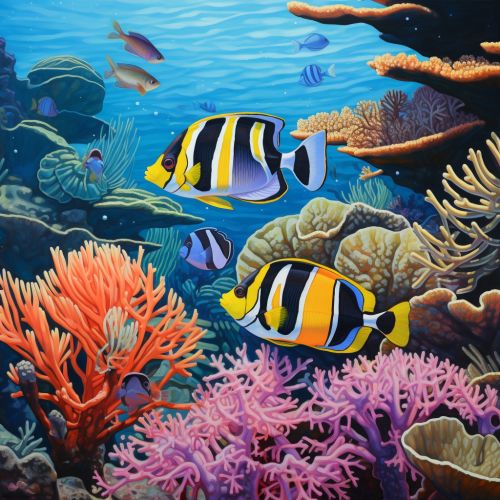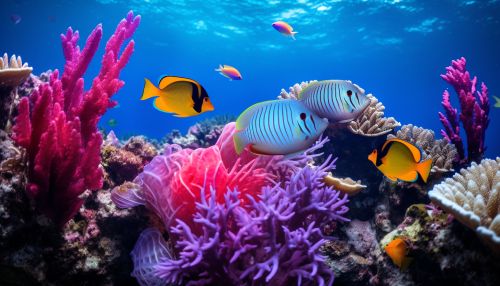The Evolution of Coloration in Reef Fish
Introduction
The evolutionary process has led to a diverse array of coloration in reef fish, a phenomenon that has intrigued scientists for centuries. The vibrant hues and patterns seen in these species are not merely for aesthetic appeal, but serve a variety of functional roles in their survival and reproduction. This article delves into the evolutionary mechanisms and ecological factors that have shaped the coloration of reef fish.


Evolutionary Mechanisms
Natural Selection
Natural selection is a fundamental mechanism in the evolution of coloration in reef fish. Predation pressure, environmental factors, and the need for effective communication have all influenced the development of specific color patterns.
Predation
Predation is a significant selective pressure that has influenced the evolution of coloration in reef fish. Bright colors can serve as a warning to potential predators that the fish is toxic or distasteful, a phenomenon known as aposematism. Conversely, some reef fish have evolved cryptic coloration to blend in with their surroundings and avoid detection by predators.
Environmental Factors
The environment plays a crucial role in shaping the coloration of reef fish. For instance, the light conditions within the reef environment can influence the visibility of certain colors, leading to the evolution of species-specific color patterns.
Communication
Coloration in reef fish also serves as a vital tool for communication. Bright colors and distinctive patterns can be used to signal dominance, readiness to mate, or territorial boundaries to other members of the same species.
Sexual Selection
Sexual selection, a subtype of natural selection, has also played a significant role in the evolution of coloration in reef fish. In many species, males are more brightly colored than females, a phenomenon known as sexual dimorphism. These vibrant colors and patterns are used to attract mates and signal fitness to potential rivals.
Ecological Factors
Coral Reef Environment
The coral reef environment, with its complex structures and diverse array of species, has influenced the evolution of coloration in reef fish. The need to blend in with the colorful corals, sponges, and other reef organisms has led to the development of a wide range of colors and patterns in reef fish.
Diet
The diet of reef fish can influence their coloration. Some species obtain their vibrant hues from the carotenoids and other pigments present in their diet. This dietary influence on coloration can also be seen in the changes in color that occur in some species as they mature and their diet changes.
Conclusion
The evolution of coloration in reef fish is a complex process influenced by a variety of evolutionary mechanisms and ecological factors. Through natural and sexual selection, these species have developed a diverse array of colors and patterns that serve a variety of functional roles in their survival and reproduction. As we continue to study these fascinating creatures, we gain a deeper understanding of the intricate interplay between evolution and ecology that shapes the biodiversity of our planet's coral reefs.
